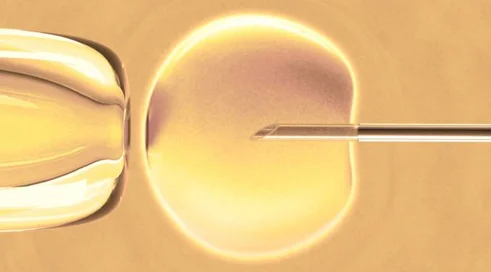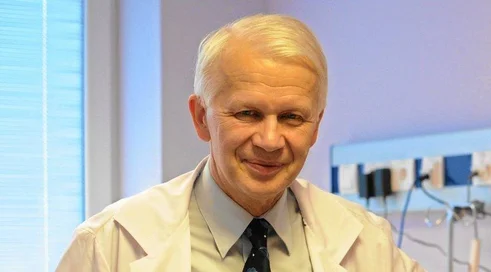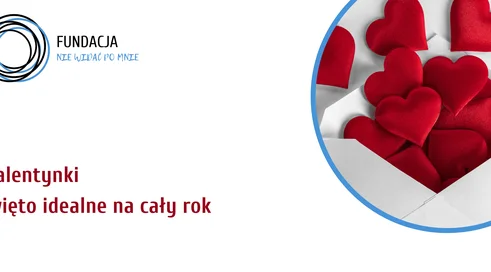When I first heard about LDN therapy a few years ago from a friend's wife, I couldn't believe that the therapy had significantly helped her with Hashimoto's disease. What's more, she claimed that low-dose naltrexone therapy, because that's what LDN (low dose naltrexone) means, also improved her quality of life, allowing her to get rid of many unpleasant symptoms that accompanied her diseases, including untreated Lyme disease. How did it happen?
Well, Monika changed her current endocrinologist for a doctor who spent most of her professional life in the USA and returned to Poland to retire. As a practicing physician, she felt bad not working, so she opened a practice in Poland, where, on the recommendation of a friend, her friend's wife, Monika, luckily found her way. After that, I experienced the healing properties of LDN for myself and I have seen the positive effects of this therapy on patients many times.
Currently, this method is officially discussed in courses organized by the Medical Center for Postgraduate Education, which is very pleasing, especially for doctors who are aware of the potential of LDN therapy. But what is it actually used for and what is naltrexone?
Naltrexone is a drug registered only for the treatment of drug and alcohol addiction. It works by blocking the opioid receptors in the brain, and thus affects the brain's response to alcohol and some narcotic drugs - from the opioid group. Blocking these receptors also leads to a series of reactions that affect the immune system.
Recently, there have been a number of scientific papers showing that low-dose naltrexone may help treat some chronic conditions, such as Crohn's disease (inflammation of the intestines) and ulcerative colitis. A beneficial effect has also been shown in irritable bowel syndrome. It seems that it can also improve the condition of patients with chronic fatigue syndrome, long COVID, in the treatment of anxiety, and in poor sleep quality and depressed mood.
In 2009, Younger and Mackey published a single-blind crossover study using LDN to treat painful fibromyalgia. The authors of the study concluded that LDN may be effective in relieving the symptoms of this disease. LDN, an opioid antagonist, blocks endogenous opioid receptors for approximately 4-6 hours. This "temporary blockade" of receptors is followed by an increase in endogenous opioid receptors and ligands, which is one proposed mechanism for pain relief. LDN is also described in scientific publications as an atypical anti-inflammatory agent and modulator of glial cells in chronic pain.
One of the endogenous opioid receptors affected by LDN is methionine (Met)-enkephalin, also known as opioid growth factor. Met-enkephalin modulation is thought to affect cell proliferation, which may have implications for LDN and cancer therapies.
Met-enkephalin, or opioid growth factor, has been proposed as a potential oncology target for gynecologic cancer (GYN), with LDN as a potential complement to other standard therapies for GYN cancer. In addition, single cases of beneficial effects of LDN have been described, e.g. in pancreatic and kidney cancer, breast cancer, ovarian cancer, glioblastoma and in the treatment of lymphomas. It turns out that people treated for the above diseases using chemotherapy in combination with LDN therapy live longer than people treated with chemotherapy alone.
Recently, in one of the scientific medical journals, there was an article describing the case of a 43-year-old woman who, after starting LDN therapy, was diagnosed with resolution of endometrial intraepithelial neoplasia (EIN) confirmed by biopsy with mucinous metaplasia. The article can be found in the latest issue of the journal Pain Medicine and is titled: "Low-Dose Naltrexone in Endometrial Intraepithelial Neoplasia."
But in this article, I would like to focus on the beneficial effects of naltrexone in endocrine gynecology and in the treatment of infertility, which I have been dealing with for many years. Infertility is the inability to get pregnant after a year of regular unprotected intercourse (at least 2-4 times a week). The causes of infertility can affect one or both partners. In fact, it is assumed that 40% of the causes are on the woman's side, but the same is true, because about 40% of the causes of infertility are caused by the male factor. For the remaining 20%, fertility problems occur in both men and women. Among the most common causes of infertility in women are ovulation disorders, abnormalities in the structure of the uterus, pathologies of the cervix, obstruction or damage to the fallopian tubes. Among other causes of female infertility, there is an increasingly common endometriosis, as well as premature ovarian failure, often referred to as premature ovarian failure. The loss of their hormonal function is a disease associated with the onset of early menopause. It occurs in about 1 percent of women in the population. The incidence is estimated at 1/100 women under 40 years of age and 1/1000 women under 30 years of age.
However, it seems that this "trend" is slightly intensifying with each decade. Premature ovarian failure is diagnosed in about 10% of women. Women attending infertility clinics. It most often affects women aged 25-40. Other causes of infertility include pelvic adhesions, which are often the result of previous infections or surgeries. Other causes can also be cancer and their aggressive treatment, and metabolic diseases, including obesity and its complications, as well as the whole spectrum of autoimmune diseases and genetic defects.
A large role in infertility, which will most likely be diagnosed in children when they reach adulthood, will be played by frequent holding of tablets with Wi-Fi on on their laps. Unfortunately, the lack of education in this area may even contribute to the loss of fertility in the future. Doctors are urging that keeping a Wi-Fi-on tablet on your lap can negatively impact children's fertility, so it's important to minimize long periods of use of this device and turn off Wi-Fi when using it in the immediate vicinity of the gonads.
The causes of male infertility - and these lead to a gradual deterioration of semen quality with each decade - include abnormal sperm production or function, pathology of the seminiferous tubules, toxins, medications, and drug abuse. Causes of male infertility include abnormal production or impaired function of sperm. These also include problems with the seminal ducts, toxins, drugs and stronger stimulants, boosters and, as I mentioned above, also drugs.
One of the most famous people using LDN therapy on a daily basis is Dr. Phil Boyle - director of the NaPro infertility clinic in Dublin, Ireland and president of the International Institute of Regenerative Medicine. He is an active member of the American Academy Fertility Care Professionals (AAFCP), a Certified Fertility Care Practitioner (CFCP) and an active member of the Irish Fertility Society. Dr. Boyle observed that many of his previously infertile patients with concomitant autoimmune diseases became pregnant while taking LDN.
Previously as a family physician, Dr. Boyle had experience treating patients with autoimmune diseases such as rheumatoid arthritis (RA) and multiple sclerosis (MS) with low doses of naltrexone (LDN) as an "off-label" medication. He knew that modulating the immune system by stimulating endogenous endorphin production resulted in clinical improvement. He was surprised how many of his infertile autoimmune patients became pregnant while taking LDN.
.He surmised that their infertility must be due to endorphin deficiency, and that LDN - well known for stimulating endorphin production - is responsible for restoring fertility. What are endorphins, how do they affect health and what is the role of LDN? Based on the mechanism of action of LDN, Dr. Boyle has successfully treated many infertile patients with LDN therapy. The mechanism of action of naltrexone seemed simple. Extremely powerful was its ability to stimulate the production of endorphins in those patients who showed symptoms of endorphin deficiency. He successfully prescribed LDN to women with endometriosis and observed a lower rate of miscarriages and better and healthier pregnancies in women who continued to use LDN during pregnancy. The use of LDN during pregnancy is safe in his opinion, and women who continue taking LDN until 37 weeks of pregnancy have better outcomes. A significant role in the beneficial effects of low-dose naltrexone is played by its anti-inflammatory function.
But how does LDN therapy reduce inflammation? Moreover, LDN is a promising therapy for reducing inflammation, especially when other immunomodulatory therapies are not enough to reduce it! cLDN is a daily oral therapy that is inexpensive and usually very well tolerated. It works by blocking receptors for endorphins and enkephins, two chemicals linked to inflammation in the brain. The therapeutic effect of low-dose naltrexone has so far been studied in various autoimmune and inflammatory diseases.
Increased concentrations of TNFα, IL-6 and IL-12 by LDN have been found to reduce inflammation through mechanisms involving the production of cytokines in immune cells. LDN may also promote the maturation of dendritic cells and stimulate the production of the aforementioned TNFα and IL-12. So far, many studies have shown that LDN can effectively reduce inflammation, manifested by the reduction of ESR and other markers of inflammation (high-sensitivity C-reactive protein, plasma secreted cytokines, growth factors, matrix metalloproteinases, etc. LDN has also shown promise in reducing spasticity and improving mental health, as well as improving the course of multiple sclerosis, slowing the progression of the disease and improving the condition of patients.
In my opinion - LDN can become a milestone in the treatment of inflammatory and autoimmune diseases. However, further research on its mechanism of action is needed, preferably conducted by independent researchers. There are already voices that this therapy is effectively blocked due to its low price. It is worth carefully verifying the authors of papers demonstrating its ineffectiveness, especially disclosing their conflict of interest, and drawing conclusions on your own.
Now let's consider how LDN treatment reduces the risk of miscarriage? Low-dose naltrexone therapy has been found to be effective in reducing the risk of miscarriage. LDN is a drug used to modulate the body's immune system, and the therapy has been linked to improved pregnancy outcomes in women with recurrent miscarriages. LDN works to promote a balance between Th1/Th2 and Th17/Treg ratios, which are key determinants of the immune system's ability to respond to different situations.
This helps reduce the risk of miscarriage due to an imbalance in the immune system. In addition, LDN therapy has been shown to improve endometrial quality, which is critical for a successful pregnancy outcome. In addition, LDN therapy is believed to reduce inflammation in the body, which can be a factor in miscarriage.
Therefore, LDN therapy is an effective way to reduce the risk of miscarriage and a successful pregnancy. What are the specific mechanisms of action of LDN that support the course of pregnancy? Low-dose naltrexone has become a more popular and high-profile infertility treatment in the US some time ago, as studies have shown that LDN is effective in helping couples conceive the child they desire.
The mechanism by which LDN works to promote pregnancy is complex, but the existing evidence, growing every year, suggests that it works through several specific pathways. LDN has been found to regulate the immune system, reduce inflammation, and regulate hormones, all of which are important for successful conception. LDN is also believed to have a beneficial effect on the uterine environment, allowing embryos to implant in a more favorable environment.
In addition, LDN has been found to reduce the risk of miscarriage as well as the risk of preterm delivery. It also helps to increase progesterone levels, which is important if you are at risk of pregnancy loss. The beneficial effects of LDN on the immune system and inflammation have been rightly linked to improved fertility and reduced risk of recurrent miscarriages. LDN has also been found to be beneficial in endometriosis, a common cause of infertility.
These findings suggest that LDN may be a promising treatment for infertility and point to the need for more to better understand how it works and what the potential benefits are for infertile couples. How effective is LDN therapy in reducing the risk of miscarriage? Low-dose naltrexone (LDN) therapy has been proposed in some American and Irish clinics as a way to reduce the risk of miscarriage in pregnant women. LDN is a drug that, as I mentioned earlier, binds to the opioid receptors in the body and regulates the production of endorphins in the body. In particular, LDN is thought to help reduce endorphin deficiency in pregnant women, which is considered a significant risk factor for miscarriage.
LDN therapy was studied to evaluate its effectiveness in reducing the rate of miscarriage. A study of pregnant women with a history of recurrent miscarriages found that LDN therapy was effective in increasing the chances of a successful pregnancy. The study found that women treated with LDN had a significantly higher rate of successful pregnancy than women who received a placebo. In addition, the study showed that LDN therapy was more effective in women with a history of recurrent miscarriage than in women with a single miscarriage. This suggests that LDN therapy may be more effective in reducing the risk of recurrent miscarriage than preventing a single miscarriage. Overall, the evidence suggests that LDN therapy may be an effective way to reduce the risk of miscarriage, especially in women with a history of recurrent miscarriage.
Does LDN therapy improve ovarian reserve? Low-dose naltrexone (LDN) therapy has been found to improve ovarian reserve in women with varying degrees of hypothalamic ovarian failure. A study of 66 women treated with LDN showed a significant increase in the amplitude and frequency of gonadotropin pulses. This results in regular menstrual cycles in women and elevated levels of gonadotropins and ovarian steroids.
In addition, 18 out of 16 women undergoing fertility treatment became pregnant. While LDN therapy has been shown to be effective, mild side effects of naltrexone have been reported. I used to often ask myself, does LDN affect Anti-Müllerian Hormone (AMH)? Anti-Müllerian hormone (AMH), belonging to the TGF-β superfamily, plays a key role in the control of folliculogenesis, i.e. the growth and development of follicles in the ovary. It is produced by the granulosa cells (GC) of the small growing follicles and its expression decreases as the follicles grow to the antral stage. AMH levels in follicular fluid from small antral follicles are 2–3 orders of magnitude higher than in preovulatory follicle fluid, and AMH expression increases in growing follicles until they reach the antral stage. In women, AMH remains elevated until the follicle is about 8 mm in diameter.
This hormone also inhibits gonadotropin-dependent follicle-stimulating hormone and inhibits the initial recruitment of primordial follicles, thus avoiding the premature depletion of the ovarian follicle reserve. In addition, AMH is involved in emotional regulation, thought processes, and self-control through mind-altering drugs or compulsive behaviors. A recent study showed that LDN increased AMH/AmH mRNA levels in KGN and mGC and that together GDF9 and BMP15 significantly induce AMH mRNA and protein levels in KGN cells in a concentration-dependent manner. Thus, AMH plays a key role in regulating follicular development and ovarian function.
Studies published so far have also shown that low doses of naltrexone may be beneficial in the treatment of premenstrual syndrome (PMS), exercise or stress-related amenorrhea, polycystic ovary syndrome (PCOS) and endometriosis. What are the possible side effects of naltrexone? The most common side effects of naltrexone are vivid dreams, sometimes mild difficulty falling asleep, although these may be more psychosomatic in nature. Occasionally mild nausea may occur, much less frequently dizziness, headache and mild dry mouth. Remember that when using LDN therapy, we use very small doses of this drug - over 10 times lower than in addiction therapy. What else should we know about naltrexone?
Naltrexone should not be taken with opioid drugs such as morphine or codeine, as well as with ephedrine or its derivatives. Additionally, alcohol should not be consumed while taking naltreoxone. Naltrexone should be discontinued 2 days before elective surgery. What dose of naltrexone is usually used? Therapy begins with various doses - most often 1 mg, eventually reaching a dose of 3-4.5 mg of Naltrexone, taken at night and which is a typical target dose for the diseases treated by doctors. Is naltrexone approved by the US FDA? Yes, but just like in Poland - the Office for Registration of Medicinal Products, Medical Devices and Biocidal Products in Warsaw confirms its registration in the treatment of drug and alcohol addiction. Unfortunately, it does not have official FDA approval for the treatment of endometriosis, polycystic ovary syndrome, or any of the other conditions listed above.
The use of the drug in these conditions is an example of off-label therapy, which should be used after carefully informing the patient about her rights and giving her informed consent on the appropriate form. What is interesting and worth mentioning is the fact that in the case of many women, whose cases were reported mainly in the USA, LDN actually made it easier to get pregnant and successfully carry it to term. However, to find out exactly how it works, you need to conduct research on a much larger scale, which can be difficult to carry out. What is the reason for this, please ask yourself, Naltrexone, both in Poland and in the USA, where the naltrexone therapy discovered in the 1980s by Dr. Bernard Bihari originated, is available only on prescription and only in doses of 50 mg.
LDN is an off-label therapy, increasingly used by some doctors in Poland. Imagine my surprise when I took part in the infertility treatment course organized in 2022 by the Medical Center for Postgraduate Education in Warsaw (the course, as usual, was well prepared!) For the first time in Poland, during a course organized for specialist doctors, the beneficial effects of LDN during pregnancy attempts and in women with a history of recurrent miscarriages were discussed. What's more, it shows how to write a prescription for the drug! So, if your efforts to get pregnant are accompanied by failures, it may be worth talking to your doctor about LDN therapy during your next visit.



















